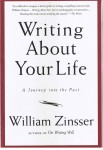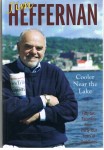The Winter of Our Discontent by John Steinbeck (1961; Viking. ISBN (unknown)
Sometimes a writer just makes you sigh and ask yourself Why do I even bother to try? Most readers know Steinbeck from the books that made him famous at the peak of his prowess, Grapes of Wrath, Cannery Row, East of Eden, of Mice and Men. But few casual readers ever read his so-called “lesser works” , including Steinbeck’s last novel, The Winter of Our Discontent. That’s really too bad. Because even though critics who reviewed the book at its release (1961) were less than awe-struck by Steinbeck’s last gift to fiction readers, Winter is one whale of a good book (there’s a pun in there and those of you who’ve read the book will understand!).
Ethan Hawley, the story’s protagonist, is a broken man. His paternal family name is one of former importance, wealth, and affluence in the New England town of New Baytown but Ethan, due to the investment ineptitude of his father, has been reduced to the status of a grocery store clerk in a store his family once owned, on a block of the town that his ancestors built. His wife Mary knows his conflict, feels his pain, but wants the good life. Ethan’s two children, his troubled son and defiant daughter, seem to require more of their father than his weariness can give. Surrounded by small town shenanigans and graft, Ethan hatches a plan to right his listing life. But there is a cost, a terrible cost, to be reckoned in regaining what has been lost. I’ll leave it to you to learn what that cost is.
A remarkable book in many ways, most especially for the style of writing Steinbeck uses to convey character and plot. The book begins in third person, with the omniscient narrator in charge, but by the third chapter, Ethan emerges as the person telling the tale in the first person. But more than this literary slight of hand, the language and the pace of the book are so removed from the style that is readily identified as classic Steinbeck; Winter really lives and breathes on the page as a stage or screen play, as if, by borrowing the Bard’s words for the title of the book, Steinbeck felt obligated to create a thespian masterpiece in honor of Sir Bill. A solid masterpiece. 5 stars out of 5. What else would you expect from an author who won both the Pulitzer Prize (for Grapes of Wrath) and the Nobel Prize for Literature ( in 1962, for his “keen social perception”)?
Writing About Your Life by William Zinsser (2004; Da Capo Books. ISBN 978-1-56924-379-4)
Someday, the world will be forced to come to grips with my “real” story. Yes, friends, there will come a time when Judge Munger unleashes his memoir on the world. When that day comes, I hope I can recreate in words a world as compelling and real as Zinsser does in his latest book on memoir. Hailed as a writing teacher of genius for his seminal work, On Writing Well, Zinsser is a master of explaining what a life story should and should not be. A good place to start, when considering great memoir writing, is Zinsser’s critique of Frank McCourt’s masterpiece of Irish lament, Angela’s Ashes:
The marvel of Frank McCourt’s childhood is that he survived it…The second marvel is that he is able to triumph over it in Angelas’ Ashes, beating back the past with grace and humor and the power of language. Those same qualities are at the heart of all good memoirs…
This is but one of Zinsser’s succinct and deliberate examples of great expository writing. Throughout the book, the master uses examples from his own past (and those of other writers) as springboards to discourse about life, writing about life, and the avoidance of ordinariness that plagues so many attempted memoirs. A great little book even if you’re not thinking about telling the world who you are. 4 1/2 stars out of 5.
Cooler Near the Lake by Jim Heffernnan (2008; X-Comm ISBN188731734-1)
Jim Heffernan was a reporter and editor at the Duluth Herald and Duluth News Tribune for 42 years. For 34 years, he wrote a “slice of life” column that chronicled a variety of experiences, real and imagined, Jim and his family (again, real and imagined) endured. This collection of 52 (one for each week of the year, clever that) stories, a sort of “best of” compendium of Jim’s work will bring tears to your eyes (“Paul Wellstone Leaves Big Shoes to Fill”) and a smile to your face (“Calvin Griffith: Calvin at the Plate”). Short (mainly because his column had a word limit of approximately 600 words) and to the point, these stories are the perfect thing to read around a campfire on a canoe trip, before bed, or when, shall we say, “retiring to the facilities”. There’s much more to Heff than these stories but at least the best of what he had to say is preserved for us to enjoy. 4 stars out of 5.





